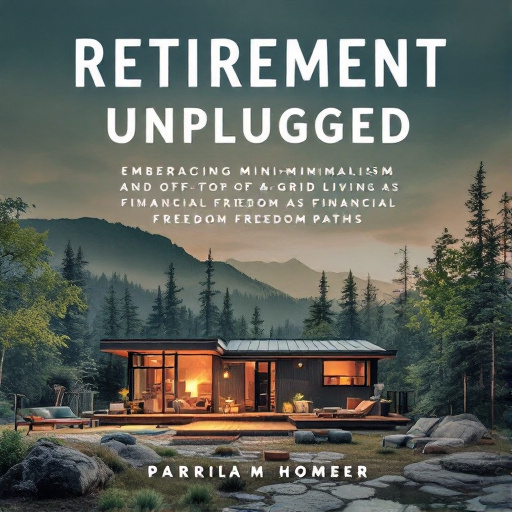Featured Articles
- "Beyond Savings: How Gardening and Hobbies Can Transform Your Retirement Plans"
- Reimagining Retirement: How Virtual Reality Could Transform Senior Living and Financial Independence
- "Rethinking Retirement: How Eco-Friendly Living Is Shaping Future Financial Planning"
- Retire in Style: Exploring the Rise of Sustainable Living Communities for Seniors
- "Retirement Reimagined: How Eco-Conscious Living is Shaping Future Financial Landscapes"
Retire in Style: Exploring the Rise of Sustainable Living Communities for Seniors
Retire in Style: Exploring the Rise of Sustainable Living Communities for Seniors
As the population of seniors continues to grow, so does the appeal of sustainable living communities, which promote eco-friendly and harmonious lifestyles. This article delves into the rise of these innovative living spaces, exploring their benefits, challenges, and how they are redefining retirement for seniors everywhere.
The Green Wave: A New Era of Living
Imagine a community where the air is fresh, gardens abound, and neighbors gather for potlucks featuring homegrown produce. Sounds idyllic, doesn’t it? Enter the realm of sustainable living communities, a rapidly growing phenomenon designed to meet the needs of aging populations while nurturing the planet.
Why Sustainability Matters
According to the U.S. Census Bureau, by 2030, all baby boomers will be over the age of 65, which means there will be more seniors than ever before, and many will seek vibrant communities that match their values. The appeal here isn’t just about living among like-minded individuals; it’s also about the ability to engage in a lifestyle that conserves resources and respects the environment.
The Benefits of Sustainable Living Communities
Living in a sustainable community offers a myriad of benefits that are both personal and planetary. Take a look at some of these advantages:
1. Physical Health and Wellness
Living green often corresponds with living clean. Sustainable living communities frequently promote outdoor activities, walking trails, and community gardens. A study published in the *American Journal of Public Health* indicates that seniors in walkable neighborhoods experience improved physical health and lower rates of obesity (Frank, et al., 2010).
2. Environmental Impact
From energy-efficient homes to solar panels, these communities strive to decrease their carbon footprint. For instance, communities like EcoVillage in Ithaca, New York, utilize shared resources and renewable energy systems, significantly reducing their environmental impact while keeping residents engaged in sustainable practices.
3. Stronger Social Connections
Social isolation among seniors is a serious issue, but sustainable living communities foster camaraderie and a sense of belonging. Based on a survey by the AARP, 1 in 3 older adults reports feelings of loneliness. In contrast, those living in supportive, environmentally conscious communities often find the encouragement to engage with their neighbors and participate in group activities, combating loneliness effectively.
Real-Life Examples
Take Sunlight Gardens in Portland, Oregon, for example. Known for its stunning permaculture practices and community spirit, this sustainable living community focuses on cultivating not only plants but relationships. Residents partake in monthly volunteering days, communal meals, and fun activities that enhance both their health and happiness.
4. Financial Savings
Living sustainably can also prove economical. Many communities offer shared amenities, such as gardening tools or electric vehicles, reducing individual expenses. A report from the National Renewable Energy Laboratory states that residents can see a reduction of 25%-30% in their utility costs when residing in energy-efficient homes.
Challenges in Sustainable Living Communities
Of course, not everything is sunshine and solar panels. Careful consideration must be given to the challenges these communities face, such as accessibility. According to a study by the University of California, Los Angeles, there are substantial barriers for older adults seeking sustainable living options, particularly in urban areas where affordability can be an obstacle.
Case Study: The Rise and Trials of Green Acres
Let’s look at Green Acres, a sustainable living community that opened in 2021 in rural Michigan. Initially, Green Acres blossomed with residents eager to prioritize sustainability. However, six months in, they encountered financial strains due to rising food costs impacting their local grocery delivery service. The administration quickly adapted by implementing a community-supported agriculture program, allowing residents to grow their own food while fostering new neighborly bonds.
Navigating These Challenges
For sustainable living communities to thrive, they must proactively address challenges, from affordability to accessibility. Engaging creative financing solutions, like sponsorship from environmental organizations, or community grants, can help alleviate some financial pressures.
How to Choose the Right Sustainable Community
The search for the ideal sustainable community can be both exhilarating and overwhelming. Here are a few pointers to help guide your journey:
1. Define Your Values
Are you passionate about gardening? Renewable energy? Holistic health? Pin down your priorities to find a community that aligns with your lifestyle.
2. Visit Potential Communities
Experience the community firsthand. Attend events or open houses, and mingle with current residents. This is the best way to gauge if it’s the right fit for you!
3. Look for Support Services
Accessibility to healthcare, fitness programs, and social activities should all be considered. Find out if the community has partnerships with local medical clinics or offers activities tailored to varying physical abilities.
A United Front: Generational Perspectives
As someone aged 27 who speaks to people of all ages, I see hope in the future of these communities. When seniors and younger generations collaborate, they create an environment that welcomes innovation and sustainability. Young volunteers often visit these communities, bringing fresh ideas and enthusiasm, while learning valuable life lessons from their elders.
Bridging Generations
Several communities foster intergenerational connections through work-share programs where residents can mentor younger individuals in exchange for skills, be it gardening, cooking, or tech-savviness. Such collaboration enriches both parties and revives the age-old adage: “It takes a village to raise a child.”
A Healthy Dose of Humor
One can’t ignore the light-hearted side of retirement! Picture this: a community member holding a weekly ‘Yoga Meets Zumba’ class, where instead of traditional movement, everyone tries to keep up with their groovy instructor who’s probably younger but insists they’re just as old school. Laughter and joy coat even the most serious of workouts!
Final Thoughts: The Future Awaits
In conclusion, the rise of sustainable living communities for seniors isn’t just a trend; it’s a necessary evolution in retirement living. As we embark on this journey toward eco-friendliness and community, we foster a wave of change that not only benefits the environment but uplifts our spirit and social fabric.
Advocating for Change
Ultimately, if you’re contemplating this lifestyle, perhaps now is the time to advocate for sustainable living communities in your area. Engage with local councils, start community talks, or simply spread the word among friends and family. As the saying goes, “Be the change you wish to see in the world,” and every voice counts!
Stay Informed and Involved
Whether you're an enthusiastic 16-year-old or a seasoned 70-year-old, staying informed about sustainable practices and their impact on our future is crucial. Engage in community initiatives, join local environmental organizations, or simply read about sustainable practices to inspire change.
In conclusion, for those seeking a fulfilling and purposeful retirement, sustainable living communities offer a unique chance to retire in style, surrounded by nature and like-minded neighbors. Embrace the green wave, and let’s create a brighter, more sustainable future together!




